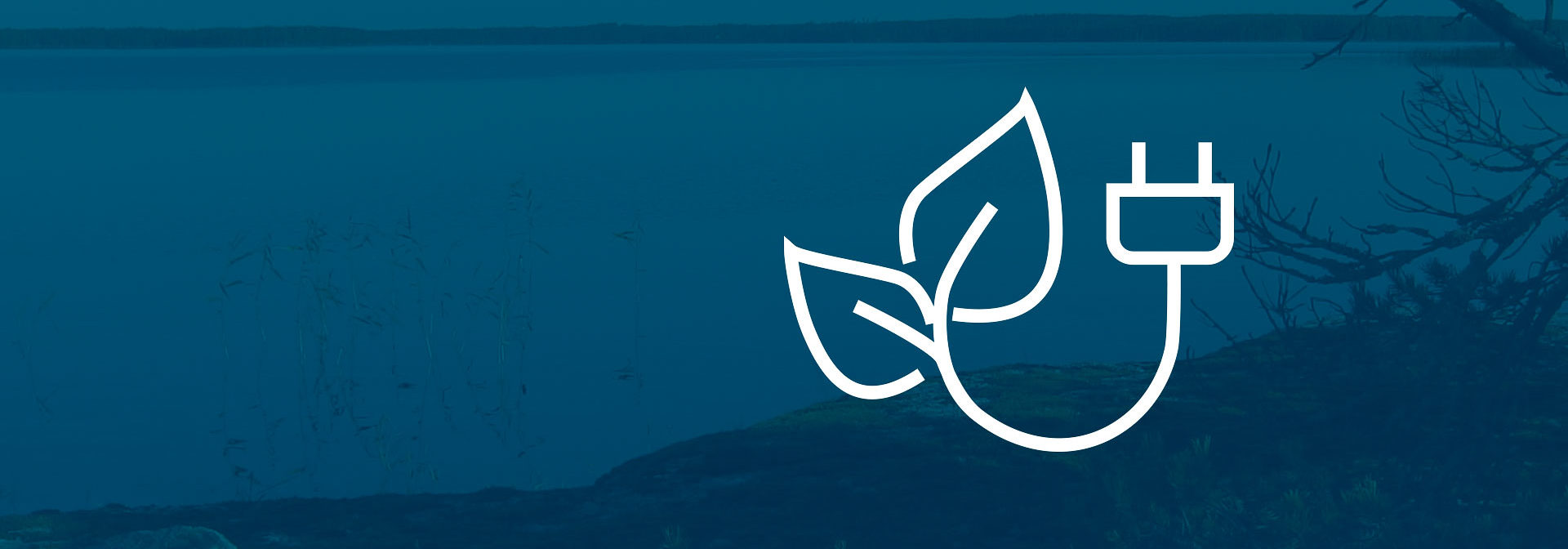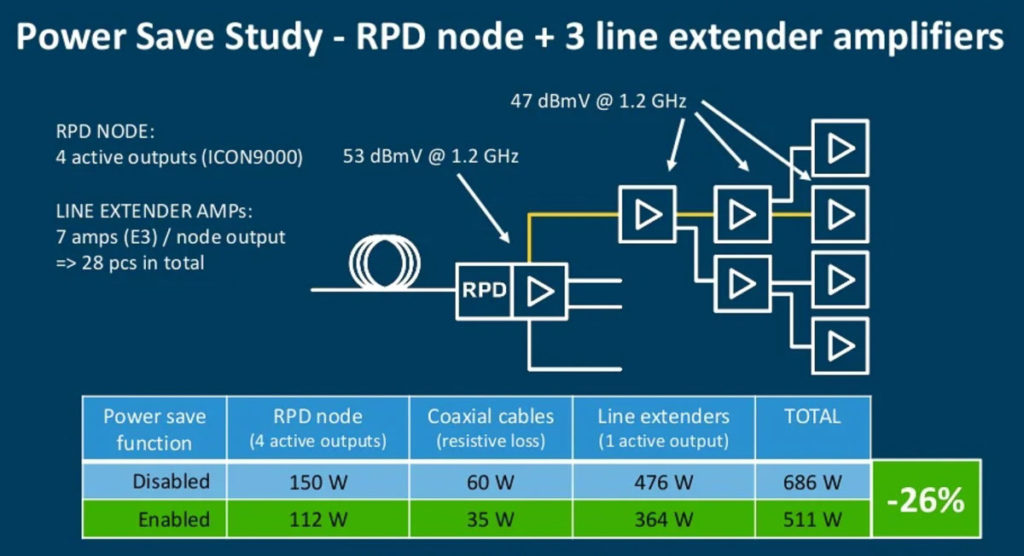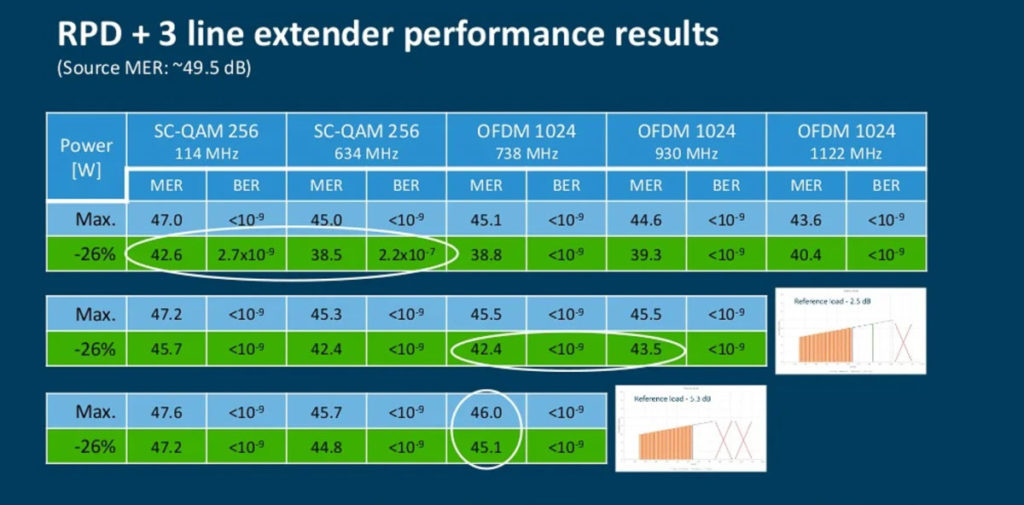
Towards greener Cable with adaptive powering
Energy consumption in broadband networks is significant and so is their environmental impact. According to some studies, the carbon footprint of the Internet already exceeds that of global air travel [1], which poses a challenge to the traditionally energy-dependent cable industry. Despite the accelerating environmental concerns, operators need to build more network capacity to maintain high availability of broadband services and keep pace with the increasing online activity. New solutions are needed to manage the growth while taking the environmental issues into serious consideration.
Adaptive powering: always on, but not fully-loaded
The cable industry generally operates as an “always on, fully-loaded” network. However, the development and deployment of cable network products, when related to the transmittable frequency range, are always far ahead of what actually is needed for the signal transmission. In practice, this means that although the amplifiers and nodes used in the field are usually operated as if the transmission frequency ranges were fully utilized at all times, the fully-loaded network is seldom needed to fulfill subscribers’ actual service needs.

In 2018, Teleste introduced [2] its power saving innovation that utilizes adaptive powering to optimize network performance according to the actual required signal levels. The core of the innovation, illustrated in Figure 1, is simple: much of the cable network energy consumption is spent on equipment in the field, in particular on their amplifier components, which are operated at full power. If full power is not necessary, the amplifier components can be operated at a lower bias current without affecting the experienced level of services for the subscribers. The innovation consists of three methods [3]:
- Remotely adjusted performance levels: Cable TV network devices such as optical nodes and amplifiers can be set in two or more predefined power saving modes according to the capacity used to set the optimal amplifier bias current based on the total RF load. The modes are activated by the operators on site or remotely.
- Autonomous performance adjustment: CATV network devices can have an integrated RF power metering feature that measures the total downstream RF power. The capacity to be used in the network is determined based on the RF measurements, and the amplifier component’s power consumption is automatically adjusted based on these results.
- Load-based performance adjustment: The total RF load is analyzed by a Remote PHY device. This analysis is used to adjust the bias of the downstream amplifiers, resulting in optimal power consumption. The operation is completely autonomous.
The calculations show that the three methods can save up to 30% of the energy consumed by the amplifier components. As RF amplifier components consume 70% of all power in outside plants, this leads to up to 20% reduction in the total access network power consumption. [4]
Measuring the power-saving effects in practice
Recently, we performed a study [5] in a real network environment to see the effects of the power save function in practice. Power consumption was measured in a segment consisting of an RPD node and 28 line extender amplifiers and the reference load (full load) operation points were selected at about 3 dB below the maximum level.

Illustrated in Figure 2, we can see that enabling the power save function resulted in a 26% decrease in the power consumed in the segment. Most of the reduction comes from the line extender amplifiers but power is also saved in the node and coaxial cables. Due to the number of amplifiers, the amount of energy saved in them obviously plays a significant role when cutting down the network electricity bill in practice.
Next, we studied what happens to network performance in three different capacity loading scenarios. The results are illustrated in Figure 3:
- At the reference load (full load) some bit errors occur (pre-FEC) in SC-QAMs but they have no effect on the service quality. However, the recommended constellation scheme for OFDMs is 1K when power save is enabled.
- When total network loading is decreased by shutting down the highest OFDM block, system MER degrades only to some extent when power save is enabled, and even 4k OFDM is feasible. Utilizing the power save function can be highly recommended.
- Further, shutting down the next OFDM block and driving the network with an 860 MHz load when power save is enabled, makes it possible to achieve equal MER results compared to maximum performance. It does not make sense to use full power.
The measurements clarify that, when full network load is not required, enabling the power save function results in considerable reduction in network power consumption without sacrificing the high level of service quality experienced by the subscribers.

Adaptive powering provides a particularly applicable tool to increase energy efficiency in hardware and reduce the cable industry’s environmental footprint. In addition, it allows operators to rethink energy issues to control operational costs, of which energy expenses form a large part. As the cable industry is targeting towards maximum subsriber uptime and expanding capacities, utilizing innovations like this will reshape how energy consumption will look in the industry in the upcoming years: the cable can get greener in ways that are beneficial to business, customers and nature alike.
The post was originally published on Broadband Library Fall 2019.
References
[1] Climate Care. Infographic: The Carbon Footprint of the Internet https://climatecare.org/infographic-the-carbon-footprint-of-the-internet/. Accessed 2 July 2019.
[2] Teleste Corporation. 2018. Teleste’s power-saving innovation selected as a winner in Adaptive Power Challenge!. https://www.teleste.com/news-and-insights/press-and-stock-releases/net/telestes-power-saving-innovation-selected-as-a-winner-in-adaptive-power-challenge/ Accessed 24 October 2018.
[3] Väre, Jani, Dr. 2018. The cable industry’s energy challenge and what we can do about it. https://www.teleste.com/news-and-insights/articles-and-blogs/net/blog/the-cable-industrys-energy-challenge-and-what-we-can-do-about-it/. Accessed 1 July 2019.
[4] [5] Kimari, Rami. 2019. Teleste power saving innovation – Reduce power and save nature. https://www.slideshare.net/telestecorporation/teleste-power-saving-innovation-reduce-operational-costs-and-save-nature. Accessed 3 July 2019.
Rami Kimari
Rami Kimari
I have almost 20 years’ experience in the fixed cable networks (HFC) sector. After joining Teleste in 2000, I have worked in various positions from Designer to Product Manager and currently, I’m in charge of Teleste’s Access Networks (HFC) business area.



